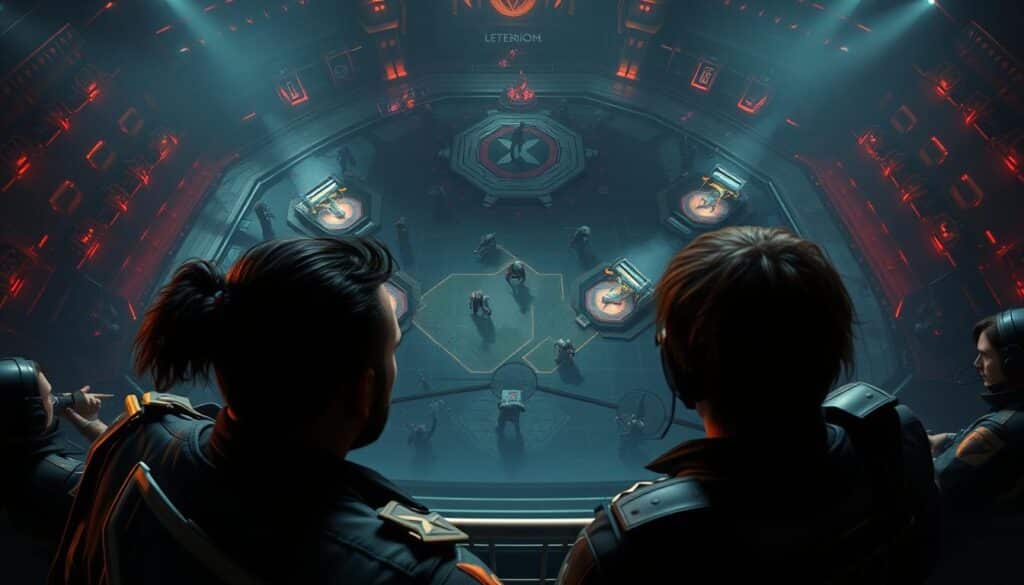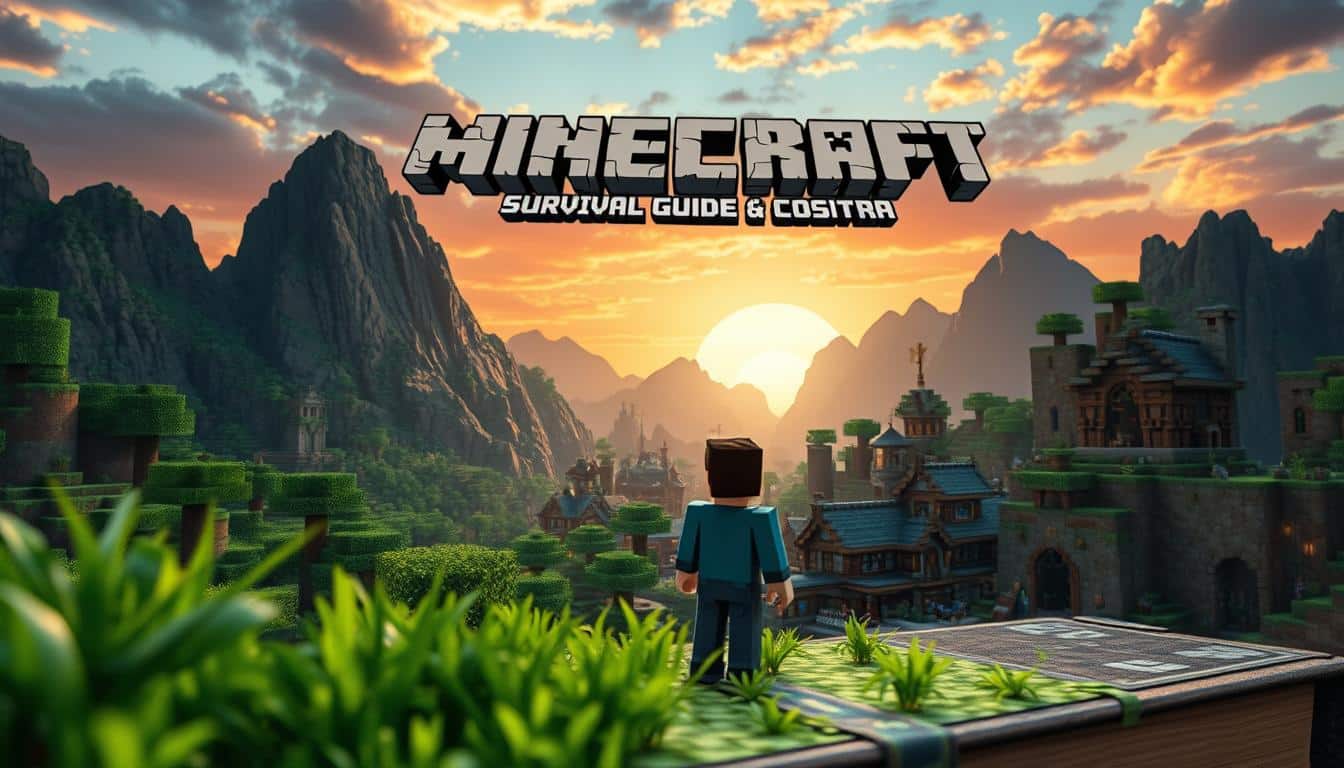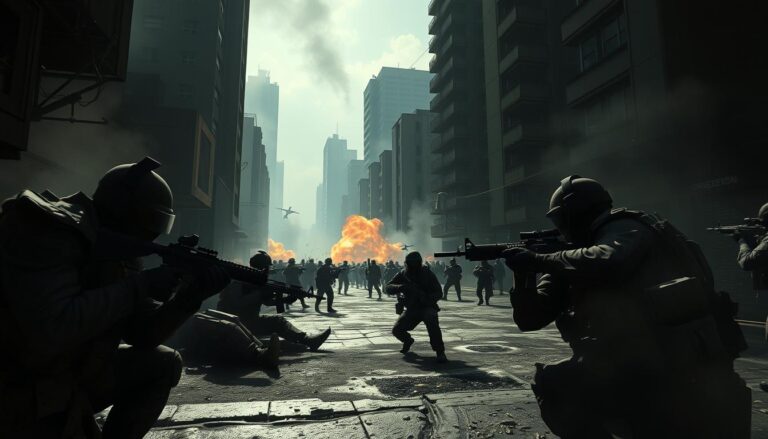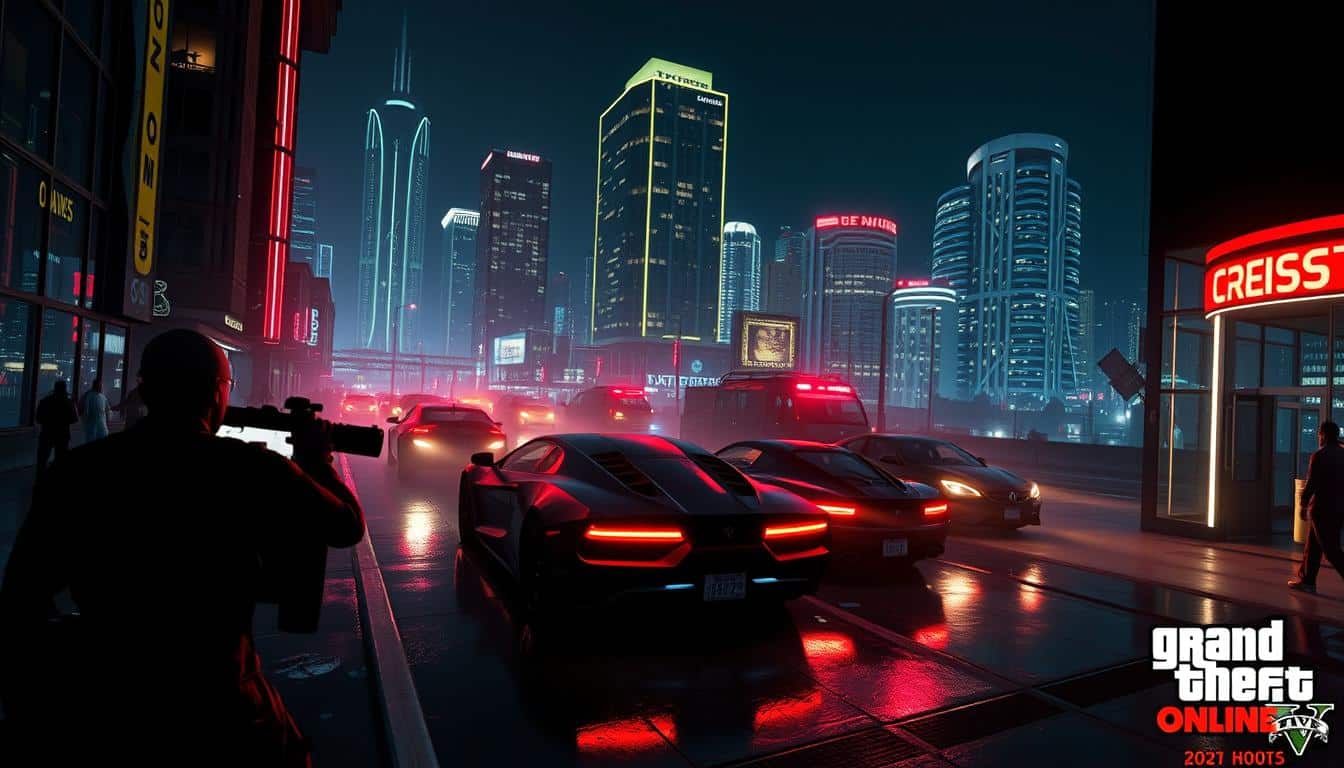Anúncios
Welcome to the Master Roles with League of Legends Champions Guide. This short introduction explains what you will learn and how the guide helps players from Bronze to Diamond improve role mastery. Expect clear, actionable tips for top, jungle, mid, bot, and support play. We also cover champion select, builds, decision-making, and practice routines.
Anúncios
This LoL guide pulls best practices from Riot Games patch notes and trusted analytics sites like OP.GG, U.GG, Mobalytics, and ProBuilds. Use those sources to check itemization and meta shifts while following our role-focused advice. The goal is to help you master roles LoL by combining micro mechanics, macro strategy, and champion knowledge.
The article is organized into 12 focused sections so you can jump to the role or topic you need. Whether you want champion recommendations, matchup tips, or practice drills, this League of Legends Champions Guide gives practical steps to elevate your gameplay and climb the ladder.
Anúncios
Key Takeaways
- This guide helps you master roles LoL across all main positions.
- Combine official Riot notes with OP.GG and Mobalytics for up-to-date builds.
- Focus on both micro mechanics and macro decisions to improve faster.
- Use the sectioned layout to find role-specific strategies quickly.
- Actionable tips target players from Bronze to Diamond aiming for role mastery.
League of Legends Champions Guide: Master Your Favorite Roles
This guide maps a clear path from basics to advanced play. Expect role-by-role breakdowns for top, jungle, mid, bot, and support. You will find champion archetypes, matchup notes, macro strategy, itemization, rune setups, and ability orders. Practical examples cover wave management, jungle pathing, and combos for Renekton, Lee Sin, LeBlanc, Kai’Sa, and Thresh.
What this guide covers
Start with concise role objectives and win conditions for each lane. Read short sections on champion archetypes so you can pick a style that fits your strengths. The guide includes matchup tips, timing windows for power spikes, and common play patterns that help you react faster in games.
How to use champion guides to improve role proficiency
Build a small champion pool and learn core combos first. Use practice tool drills, play normals, and test item choices. Study matchups and note early item power windows. Review VODs to spot decision points where you could trade, roam, or contest objectives.
Pull data from trusted sites to refine situational builds and rune tweaks. Track your games and repeat drills that fix recurring mistakes. This step-by-step approach shows how to use champion guides without overload, so your mechanics and decision-making rise together.
Why role mastery matters for climbing and teamwork
Specializing in one role boosts consistency and reduces indecision in solo queue. Role mastery improves objective control, clearer shotcalling, and better synergy with teammates. A top laner who times teleport well, a jungler who secures dragons, and a support who roams at the right moment raise the team’s win probability.
Mastery also shortens the climb. Players who focus on role proficiency make fewer mid-game mistakes and convert leads more reliably. That steady impact is the main reason many players climb the ladder LoL when they commit to learning one role deeply.
| Focus Area | Quick Action | Benefit |
|---|---|---|
| Champion Pool | Pick 2–4 champions per role | Faster matchup mastery and consistent play |
| Combos & Power Spikes | Practice core combos in practice tool | Improved trades and teamfight impact |
| Matchup Study | Review common counters and early item windows | Better lane control and fewer deaths |
| VOD Review | Analyze decision points after each game | Faster learning from mistakes |
| Data Integration | Compare builds from OP.GG and Mobalytics | Adaptive builds that fit your skill and meta |
| Practice Routine | Daily drills for CS, combos, and vision | Steady mechanical and map awareness gains |
Top Lane Champions and Role Fundamentals
This top lane guide breaks down core duties and common win conditions for players who want to dominate the side lane. Top laners must win lane, pressure the map, enable split-pushing, and make strong teleport plays that swing neutral objectives. Roles vary by game: you might be the split-push win condition, the teamfight frontliner, or the solo carry who snowballs.
Role overview: responsibilities and win conditions
Primary responsibilities include lane control, wave management, and making proactive teleports to influence fights. A good top laner times recalls so they keep plate gold and avoid losing tempo. Winning conditions shift with champion choice and team comp, so adapt early: prioritize split-pushing when you outscale, or group if your team needs a durable frontline.
Champion archetypes: bruisers, tanks, fighters
Bruisers like Renekton and Darius mix damage with durability and thrive on item spikes such as Black Cleaver or Stridebreaker. Tanks like Malphite and Ornn initiate fights and soak damage while building Sunfire Aegis or Thornmail. Fighters and duelists like Fiora and Camille excel at 1v1s and skirmishes, favoring Trinity Force or crit/lifesteal paths depending on matchup.
Itemization shapes playstyle. A bruiser will look for moderate armor and damage to maintain pressure. A tank will buy resistances to absorb focus for carries. A duelist will stack damage and sustain to win isolated fights.
Matchups, wave management, and teleport play
Wave control rules: freeze to deny ranged poke champs, slow-push to crash waves before roaming, and hard shove to reset or deny turret plates. Reset waves when you need to recall safely or to bait enemy teleport responses.
Matchup tips: versus ranged top laners like Jayce, respect poke and avoid all-ins until key items. Against Teemo, use sustain and smart minion aggression to prevent long freezes. Read minion waves and enemy cooldowns to set up trades and avoid ganks.
Teleport plays require timing and communication. Use TP to turn dragons, secure Rift Herald, or collapse on bot side after forcing a recall. Avoid wasting TP on low-impact fights; a single misused teleport can hand tempo and objectives to the enemy.
| Archetype | Example Champions | Core Items | Primary Win Condition |
|---|---|---|---|
| Bruisers | Renekton, Darius | Black Cleaver, Stridebreaker | Lane dominance and teamfight skirmishes |
| Tanks | Malphite, Ornn | Sunfire Aegis, Thornmail | Frontline control and engage |
| Fighters / Duelists | Fiora, Camille | Trinity Force, Sterak’s | 1v1 carry potential and split-pushing |
| Play patterns | — | Wave freeze, slow-push, hard shove | Control tempo and deny teleports |
| Macro tips | — | Vision, roam timing | Coordinate teleport plays for objectives |
Jungle Champions and Map Control Strategies

This jungle guide breaks down core responsibilities, practical routes, and vision habits that win maps. Focus on tempo, lane support, and securing key objectives like dragons and Baron to turn small leads into game-ending pressure.
Core responsibilities: objective control and ganking
Primary tasks for any jungler are clear. Secure drakes, Rift Herald, and Baron Nashor while creating gank windows for sidelanes. Good objective control forces the enemy team into reactive play and opens safe plays for laners.
Apply ganking tips that match your champion. For champions like Lee Sin, aim for early level 2-3 skirmishes. For tank junglers, prioritize crowd control into lane engages. Communicate cooldowns and ultimate timers to coordinate clean dives and resets.
Pathing examples for early, mid, and late game
Sample early routes vary by playstyle. A leash-invade on champions with strong level-two skirmish can contest enemy camps to deny farm. Farm-heavy junglers benefit from full clears that end with a timely gank. Tanks rely on leash-dependent clears to reach key levels before looking to fight.
Mid-game pathing shifts toward contesting drakes and Heralds. Prioritize paths that keep you between objectives and lanes with priority. Look for counter-ganks and collapsing opportunities when enemy laners overextend.
Late-game pathing centers on vision control and macro positioning. Patrol Baron area, maintain control wards in choke points, and escort carries while denying enemy flanks. Pick fights only with clear numbers or vision advantage.
Vision control, tracking the enemy jungler, and counter-jungling tips
Place wards at river entrances, dragon pit, and deep enemy camps to create reliable information. Use Control Wards and Oracle Lens to deny vision before starting major objectives. Vision control jungle should be proactive, not reactive.
Track the enemy jungler by noting summoner spell use, lane states, and camp timers. If an enemy flashes in a lane, they likely missed a gank window; adapt your path accordingly. Use recall times and respawn timers to plan safe invades.
Counter-jungling works best with coordinated laner collapses. Time invades when a lane has priority or when an enemy is dead. Steal camps, place deep wards, and avoid overextension when enemy vision or numbers are unknown.
| Phase | Typical Path | Primary Goal | Key Tips |
|---|---|---|---|
| Early (0–10 min) | Leash start → buffs → gank or clear → scuttle | Secure lane pressure and early objectives | Use level windows, pressure sidelanes, track enemy buffs |
| Mid (10–20 min) | Rotate between drake, mid, and sidelanes → vision setup | Control drakes and Herald, enable sidelane leads | Prioritize vision around objectives, look for counter-ganks |
| Late (20+ min) | Ward Baron area → protect carries → contest objective fights | Secure Baron and deny enemy vision | Use Control Wards, avoid risky solo plays, collapse with team |
Mid Lane Champions and Macro Impact
Mid lane controls tempo through roams, wave management, and objective pressure. This mid lane guide breaks down play patterns for burst assassins and control mages. Read on to improve roaming mid decisions, wave control mid, and mid lane itemization choices.
Role overview: roaming, wave control, and assassins vs mages
Mid laners turn small advantages into map leads. Assassins such as Zed and Kha’Zix excel at single-target kills and quick roams. Control mages like Orianna and Syndra shape teamfights with zone control and sustained burst.
Wave control mid decides when you can roam safely. Pushing then roaming forces the enemy to lose farm or miss pressure. Holding a wave near your turret invites jungler ganks and delays enemy roams.
Roaming timing and influencing sidelanes
Best roam triggers are a pushed wave, enemy recall, or when your ultimate is up. After a successful roam, convert pressure into dragon or turret plates. Use wards and swept vision to avoid counterplays.
Rune choices and mobility items affect roaming mid impact. Ignite or teleport on mid can change priority in some metas. Communicate pings and target priority before committing to roam.
Itemization and ability priority for common mid champions
Mid lane itemization diverges by role. Mages favor items that boost ability power and penetration such as Luden’s, Rabadon’s, and Void Staff. Assassins buy lethality items like Duskblade, Youmuu’s, and Edge of Night to secure quick kills.
Ability order depends on champion goals. Syndra often maxes Q for poke and burst. LeBlanc players may prioritize W for trading or E for chain CC depending on matchup. For assassins, level the gap closer or burst tool first to maximize kill windows.
Use the mid lane guide to align item builds and ability priority to your playstyle. Practice wave control mid, plan roaming mid windows, and pick items that match your role in teamfights.
Bot Lane Marksmen and Duo Synergy
Bot lane play hinges on clear roles and tight communication. This bot lane guide breaks down how ADCs and supports work together through lane phases, objective fights, and teamfights.
ADC role essentials: positioning, trading, and scaling
Good ADC positioning wins trades and keeps you alive in fights. Stay behind your frontline and move to cover angles where enemy engage champions like Leona or Nautilus can’t reach you easily.
Trading patterns depend on champion type. Lane-dominant ADCs such as Draven and Lucian look for short all-ins. Scaling marksmen like Kog’Maw and Vayne aim to farm safely until their power spikes. Track mythic and first big item timings to know when to be aggressive.
Wave management controls lane priority and access to drake. Freeze when you need protection. Push when you want to deny plates or force the enemy to recall. This ADC guide helps decide when to contest or concede lane pressure.
Support synergy: engage, peel, and lane control
Support synergy starts with role clarity. Engage supports such as Leona and Nautilus set up kills. Peel enchanters like Lulu and Janna keep you alive. Playmakers such as Thresh and Pyke create pick potential.
Vision, trading, and level two to three all-ins define early success. Use relic or Spellthief progressions correctly and time Boots purchases to hit power windows. Picking a support mythic, for example Shurelya’s, changes roaming and all-in timing.
Good support synergy means communicating cooldowns, planning engages, and protecting the ADC during enemy dives. Proper warding gives you safe windows to farm and reset trades.
Shared responsibilities: objective trading and teamfight execution
Duo lane synergy matters for drake priority and plate trading. Decide early whether plates are worth trading for dragon control. If you give plates, plan how to turn that gold into tempo for river control.
In teamfights, decide target focus before the fight begins. ADCs must know when to reposition and when to kite. Supports choose between peeling for carries or helping the ADC dive backlines with crowd control.
Communication on summoner spell cooldowns, target priority, and enemy bot lane playstyle reduces mistakes. Use pings and short calls to synchronize engages, secures, and disengages for consistent lane wins.
Support Champions and Vision Mastery
This support guide walks through playstyles, vision mastery, and roaming to help you make better calls and lift your team’s impact. Readable tips focus on timing, warding patterns, and champion choices that match common comps in League of Legends.
Support playstyles: enchanters, tanks, and playmakers
Enchanter support like Nami and Lulu shines when you want to amplify carries. Their heals, shields, and utility keep marksmen alive through fights.
Tank and engage support such as Leona or Rakan starts fights and locks targets for the team. Pick these when your comp needs reliable initiation.
Playmakers like Thresh and Bard create picks and skirmishes with hooks and roams. These champions reward map awareness and mechanical timing.
Choose situational picks to counter enemy engage, poke, or hard CC while preserving lane synergy with your ADC.
Vision control: warding patterns and denial strategies
Effective vision mastery starts with simple, repeatable warding patterns. Early lane wards belong in the tri-brush or pixel bush to prevent ganks.
Place river and dragon-side brush wards before objectives. Deep wards in the enemy jungle time scuttle and jungle pathing for pressure windows.
Control Wards deny vision in choke points near dragon and Baron, and you should upgrade trinkets when your team needs long-term control.
Coordinate sweeper usage and Oracle Lens clears with your jungler. Clearing enemy wards before a reset or objective changes probability of a clean fight.
Roaming as support and enabling carries
Leave bot lane to roam after a safe recall, when your ADC is back or when the enemy bot is dead. This keeps lane pressure while you impact mid or river control.
Roams to mid can convert into kills or force summoners, which opens a path to secure dragons. Communicate roam timing and ping for follow-through.
Champions like Pyke and Bard excel at roaming and making picks that lead directly to objectives. Use vision mastery to hide movement and create surprise plays.
- Quick checklist: ward tri-brush early, keep a Control Ward near objective entrances, upgrade trinket at priority times.
- Pick guide: choose enchanter support when your ADC must scale; pick engage support if your comp lacks reliable initiation.
- Roam rules: roam after recall or kill, always leave vision to protect ADC, and target mid lane priority for the highest impact.
Champion Select: Drafting and Counterpicks
Drafting LoL starts long before the first ban. A clear plan for team composition helps your side move from lane phase to late game with purpose. Keep damage types balanced, make sure crowd control is spread across roles, and pick at least one reliable engage or disengage tool. Choose a scaling win condition such as a hypercarry or a safe split-pusher to anchor the comp.
Constructing a balanced team composition
Prioritize front-to-back versus pick compositions based on your players and win conditions. Front-to-back comps rely on tanks like Malphite or Ornn to start fights and protect carries. Pick comps need champions with long-range crowd control or one-shot potential such as LeBlanc or Rengar.
Count crowd control and mobility during the draft. If your team lacks engage, add a reliable initiator. If your draft leans heavy on melee, compensate with wave-clear and disengage to avoid getting dove.
Reading enemy drafts and selecting counters
Scan the enemy draft for lane bullies, jungler engage potential, and late-game hypercarries. Identify early threats like Darius or Renekton and pick safe lane options or hard counters. Flex picks such as Sett or Twisted Fate reduce enemy draft information and let you react later in the phase.
Use counterpicks to deny the enemy comfort. If the opponent shows a scaling ADC, draft strong lane pressure or early jungle presence to delay their power spike. If their jungler is heavy on ganks, favor champions with good escape tools and predictable wave control.
Bans and priority picks for climbing the ladder
Bans and priority picks should target current meta powerhouses and comfort one-tricks that win your elo. Remove champions who snowball quickly or consistently cost you LP in solo queue. Prioritize comfort picks that reliably fit your team composition and matchups.
Lock in flex champions early when possible to force the opponent to reveal answers. If you play in Platinum or lower, ban high-impact solo laners or meta ADCs that frequently carry games. In higher elos, focus bans on meta junglers and champions with strong roaming presence.
Below is a compact reference to apply during champion select. Use this as a quick checklist while drafting LoL and making ban decisions.
| Draft Stage | Priority | Action |
|---|---|---|
| Early Bans | High-impact meta champions | Ban one comfort pick that snowballs, one meta jungler or mid laner |
| First Picks | Flex and win condition | Secure a flex champion or your primary win condition like a carry |
| Countering | Lane threats and jungle pressure | Pick lane counters, priority support for safety, or a jungle matchup advantage |
| Late Picks | Fill gaps in team composition | Add engage/disengage, magic/physical damage balance, or utility support |
| Final Bans | One-tricks and comfort champions | Remove the opponent’s last high-upset potential pick or a known streamer one-trick |
Builds, Runes, and Ability Order for Role Optimization
Getting items, runes, and ability order right turns stronger early leads into wins. Use a practical build guide LoL to match enemy team composition and your playstyle. Small adjustments like swapping defensive boots or choosing a different mythic can swing fights.
How to tailor builds to matchups and playstyle
Adaptation beats rigid plans. Versus heavy AD, pick armor items such as Thornmail or Randuin’s. Versus burst AP, buy Maw of Malmortius or Spirit Visage. When facing high sustain, slot Mortal Reminder or Executioner’s early.
Offensive mythics work when you lead and need to close games fast. Defensive choices help you stall and scale. Remember to tailor builds to matchups by reading the enemy win conditions each minute.
Rune choices that maximize role strengths
Pick runes that reinforce your role. ADCs often run Precision with Lethal Tempo or Fleet Footwork for sustained fights. Poke mages benefit from Sorcery with Arcane Comet or Phase Rush to catch and kite. Assassins favor Domination with Electrocute or Hail of Blades for kill pressure.
Tanks and fighters can use Resolve with Grasp of the Undying or Aftershock for laning durability. Swap in Second Wind or Bone Plating versus heavy poke or burst lanes. A solid rune guide helps you keep consistent power through varied matchups.
Ability leveling and skill combos for common champions
Standard ability order follows each pick’s strength. Max Q on many poke champions to pressure lane. Prioritize W or E when those spells provide utility like shields, heals, or gap closers.
Practice simple frameworks for combos. Weave autos between spells to increase damage per second. Use animation cancels where relevant to reduce downtime.
- Caitlyn: set up traps then use headshot poke; place traps in brushes or pixel bushes to zone and win fights.
- Katarina: level Shunpo early for resets; use daggers to chain AoE resets and secure multikills.
- Blitzcrank: land Rocket Grab then follow with Power Fist to secure early kills and pressure bot.
- Assassins (Talon, Zed): learn burst rotations like Talon W→Q→E or Zed R→W/E→Q to delete carries quickly.
| Role | Common Runes | Typical Ability Order | Matchup Item Notes |
|---|---|---|---|
| Top (tank/fighter) | Resolve (Grasp/Aftershock) | Max Q or E, then W | Armor vs AD (Randuin’s), MR vs AP (Spirit Visage) |
| Jungle (assassin/engage) | Domination (Electrocute/Hail of Blades) | Max Q for damage or W for clear speed | Early defensive jungle item if invaded often |
| Mid (mage/assassin) | Sorcery/Domination | Max Q for poke mages, W/E for utility/assassins | Maw vs AP burst, Zhonya’s vs AD heavy divers |
| Bot (ADC) | Precision (Lethal Tempo/Fleet) | Max Q or W depending on kit | Early executioner vs healing comps, boots swap for mobility |
| Support | Resolve/Arms or Sorcery | Level utility spells (shield/heal) first | Redemption/Zeke’s vs teamfight heavy, Mikael’s vs CC |
Short practice routines help lock in skill combos and ability order muscle memory. Warm up combos in practice tool, then apply them in normals. Track which item swaps win you lanes and keep that in your personal build guide LoL for faster improvement.
In-Game Decision Making and Mental Game

Good choices under pressure separate steady players from wishful ones. This section gives clear habits for in-game decision making and a strong mental game. Small checklists and quick rules help keep focus during solo queue and ranked play.
Shotcalling basics for each role
Junglers usually time objectives and ping engages. Mid laners set roam windows and call opportunities to pressure side lanes. Supports lead vision, control river entrances, and mark safe plays. Top laners call TP plays and split pressure when ahead.
Use a short shotcall checklist to reduce noise: note drake and Rift Herald timers, confirm vision before Baron attempts, and state clear goals like “take drake” or “reset and buy.” This approach keeps LoL shotcalling simple and actionable in solo queue.
Managing tilt, focus, and consistent improvement
Tilt ruins patterns faster than bad champions. Take a five-minute break after a frustrating loss and avoid duos with strangers if tilt spikes. Track small process goals like CS per minute and ward count to shift focus from wins to improvement.
Use VOD review to find repeat mistakes. Coaches such as Michael “IWillDominate” or analytics on Blitz can help with mindset materials. Building a routine around review and rest strengthens the mental game and keeps performance steady.
Time management: when to fight, when to farm, when to rotate
Fight when you have numbers, vision, or key cooldowns available. If you are behind, farm safely until you hit a power spike. Rotate when your champion outscales the lane opponent or when an objective is free and the enemy is grouped elsewhere.
Avoid risky plays without vision. Play around ultimates and item timers. When to rotate is often decided by minion waves and enemy positions; move to pressure exposed towers or secure drake windows when you hold vision and numbers.
- Quick heuristics: Fight with +1 player or vision; farm until core item; rotate on wave push.
- Simple shotcall voice line examples: “Drake in 30 — place deep wards,” “Force vision before Baron,” “Top TP ready, look for Herald.”
- Emotional controls: Short break after loss, limit duo partners, log one replay per day for learning.
Practice Routines and Resources to Improve Faster
Focused practice routines LoL let players convert playtime into real progress. Short, repeatable sessions help you build muscle memory and decision habits that hold up under pressure. Pair practice tool work with real matches to test what you learn.
Champion pools: how many champions to focus on per role
Aim for a smart champion pool size of 2–4 per role. Pick one main comfort pick, one situational counter, and one experimental or flex pick. This balance speeds mastery, sharpens matchup knowledge, and makes item and rune choices consistent.
Drills for mechanics, CS, and map awareness
Set clear drill goals. Start with CS drills in custom games and push for 100+ minions in a session. Track CS per minute to measure progress.
Use the practice tool for spell and combo muscle memory. Run limited-vision decision drills and prefiring skillshots to improve reaction timing and map awareness. Track ward per minute, vision score, kill participation, and objective control rates to find weak points.
Useful third-party tools, VOD review, and coaching tips
Use analytics platforms like OP.GG, U.GG, and Mobalytics to spot trends in your gameplay. Live overlays such as Blitz and Porofessor help with on-the-fly adjustments while you play.
Structure VOD review sessions around 3–5 mistakes per game. Mark timestamps and ask whether a different choice would change the outcome. Watch pro matches and Twitch or YouTube coach breakdowns to see practical examples of rotations and trades.
Consider paid coaching on Gamer Sensei or ProGuides when you need targeted feedback. Combine coach input with self-led VOD review and LoL coaching tools to build a repeatable improvement loop that fits your schedule.
Conclusion
This League of Legends Champions Guide conclusion pulls the essentials together: pick a role, limit your champion pool, and focus on core fundamentals like wave management, objective control, and vision. Mastering these basics creates a reliable foundation for climbing and consistent play. Small, repeatable improvements often matter more than rare highlight plays.
Adapt builds and runes to matchups and practice ability order and combos until they become second nature. Use tools such as OP.GG and Mobalytics to analyze trends and track progress. Set short-term goals—improve CS per minute by a measurable amount or raise your win rate on a chosen champion—and review your own replays after each session to learn faster.
Keep a healthy mental approach to improve at LoL: manage tilt, prioritize rest, and focus on process-driven results. The master roles conclusion is that steady practice, targeted drills, and smart use of analytics beat unfocused grind. Remember the meta shifts with every Riot patch; check official patch notes and third-party analytics often to stay current.
Apply the routines in this guide, track your milestones, and enjoy the climb. With consistent effort, the League of Legends Champions Guide conclusion should help you master roles and see measurable gains in-game. Have fun and good luck in your next matches.
FAQ
What does this League of Legends champions guide cover?
How should I use champion guides to improve in my role?
Why is role mastery important for climbing solo queue?
What are top lane win conditions and important mechanics to learn?
How should junglers approach pathing and map control?
What makes a strong mid laner in terms of macro play?
How can bot lane duos improve synergy and lane priority?
What are the best vision habits for supports?
How do I draft and pick champions to counter the enemy team?
How should I adapt builds, runes, and ability order to matchups?
What in-game decision heuristics will help me make better calls?
What practice routines and tools accelerate improvement?
How often should I consult patch notes and third-party sites?
How many champions should I focus on per role to climb efficiently?
Content created with the help of Artificial Intelligence.



